When you think of Thanksgiving, pioneer Laura Ingalls Wilder is probably not the first image that comes to mind, but maybe it should be. Most of the traditions that we associate with Thanksgiving, including tracing it back to the Pilgrims, began with the pioneers and the Victorians.
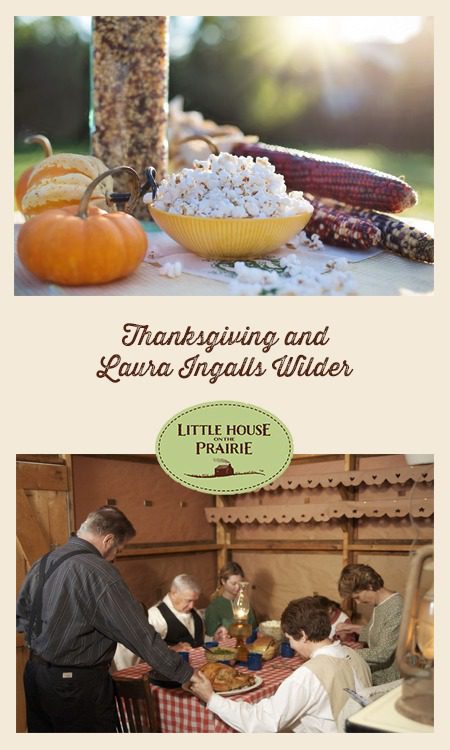
Onion vs. Sage
The most famous Laura Ingalls Wilder Thanksgiving story is the argument between Laura and Mary about the seasoning of the dressing. Laura first depicted this argument in her article in the November 20, 1916 “Missouri Ruralist” and later revisited it in By the Shores of Silver Lake. The argument begins when Pa announces that he intends to shoot a goose for Thanksgiving dinner. With the meat, you traditionally cook stuffing or dressing. Dressing and stuffing are basically the same thing, except stuffing is cooked inside the bird and dressing is cooked as a separate dish. After Pa leaves to hunt the goose, Laura delights over the prospect of dressing seasoned with onion. Mary objects, saying she doesn’t like it seasoned with onion and she wants it seasoned with sage instead. (Author’s note: This is one of the few times I side with Mary over Laura; sage seasoned dressing is MUCH better.)
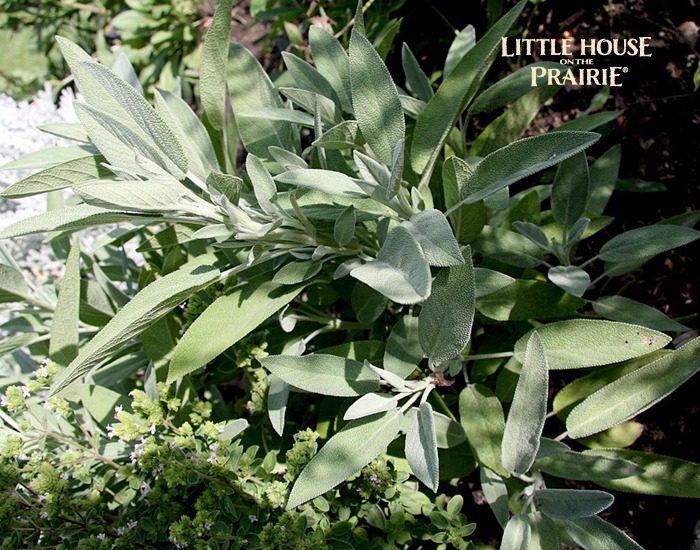
The argument between the sisters continued as they bickered back and forth – “Sage.” “Onion.” “SAGE!” “ONION!” – until Pa came back without the goose. I think this remained a favorite story with Laura because it is a great reminder at Thanksgiving time to look around and be grateful even if “the seasoning of my blessings has not been just such as I would have chosen”. Both would have been grown in a traditional pioneer kitchen garden.
Three Kernels of Corn
The second story most associated with Laura and Thanksgiving is Three Kernels of Corn. Laura describes this tradition of eating three kernels of parched corn after their Thanksgiving dinner as the Pilgrims did. Parched corn is corn that has been dried and then roasted. This three-kernel tradition has become so well known that I have heard from families across the country who have started to follow this practice in honor of Laura.
Where did it come from? The story Laura tells had some errors. First what we think of as the first Thanksgiving (or what they call in Plymouth the event of 1621) was held after a big harvest. It was two years later in the drought year of 1623 when the famine hit. William Bradford, the leader of the colony, compared their situation with that of the Romans who reported they had survived on a ration of five kernels of corn. The Pilgrims, Bradford reported, weren’t entirely without food, but had to survive on lean meat. Without a certain amount of grain (fiber) and fat in their diet they were slowly starving and would have considered even five kernels of grain a life-giving feast.
Plymouth Plantation historian Kathleen Wall quoted Bradford for me: “They (saith he) led a miserable life for 5. days togeather, with the parched graine of maize only, and that not to saturitie; and then eoneluds, that shuch pains, shuch labours, and shuch hunger, he thought none living which is not a Spaniard could have endured. But alass! these, when they hall maize (that is, Indean torne) they thought it as good as a feast, and wanted not only for 5. days togeather, but some time 2. or 3. months togeather, and neither had bread nor any kind of torne”. Take special note of the part where he says they had parched grain of maize (aka parched corn) and thought it a feast.
The tradition of celebrating Pilgrim endurance developed in the 19th century into a poem about five kernels that is still common at gatherings of the descendants of the original Plymouth settlers. Written by Hezekiah Butterworth, the refrain goes:
There were left but for rations Five Kernels of Corn.
Five Kernels of Corn!
Five Kernels of Corn!
But to Bradford a feast were Five Kernels of Corn.
Why Laura changed it to three kernels or how it was passed down to her that way, we don’t know. I am sure that this tradition has taken root and while the people doing it now may realize it’s from Laura Ingalls Wilder, my bet is that before long it will be in homes across America remembered as another thing passed down from the Pilgrims themselves.
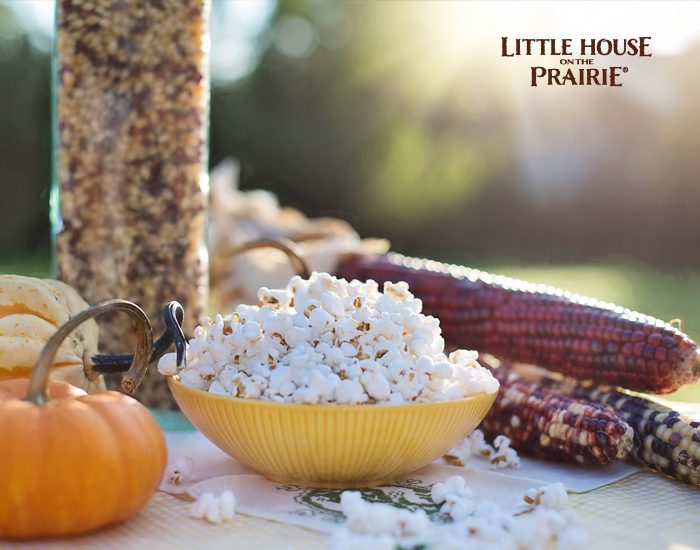
Making Popcorn
Another Thanksgiving story comes from Farmer Boy, when Almanzo talks about popcorn. He tells how it was introduced at the first Thanksgiving as the Wilder family gathered around the stove one winter’s night. He describes how Native Americans had popped and carried popcorn to the feast in big bags to amaze the Pilgrim fathers and mothers. Almanzo speculated that popcorn wouldn’t be very good that way. He’s right about that and that it HAD come from the Native Americans, but it was NOT part of the first Thanksgiving.
Popcorn had been developed and grown in the Southwest for centuries but didn’t make it to the east coast until the popcorn fad of the 1840s. In the 1860s we see it included in cookbooks with recipes like the popcorn balls Laura makes in These Happy Golden Years. Popcorn was very popular throughout the late 19th century, and it makes sense that the Wilder family was enjoying it in Farmer Boy set in 1866, much as we do today, but no early settler would have had a chance to eat it.
Adapting Traditions
The exact mental image we have of Thanksgiving today was in short supply while Laura was growing up. The meat was often jackrabbit or goose, rather than turkey, and it often had to be stewed instead of roasted. Side dishes weren’t cranberries, green bean casserole, cornbread stuffing, or pumpkin pie, rather they were ingredients they had on hand like stewed plums or potatoes or turnips.
Today we still have to be adaptive in our Thanksgiving traditions. It’s the American holiday most eagerly adopted by immigrants and their own traditional cultural foods share the table with turkey, pumpkin pie, or other things considered American foods. It’s also a very good time to keep in mind that no matter what our Thanksgiving is like today, this it is a time to be thankful, even if the seasoning of our blessings is not quite what we would choose them to be.
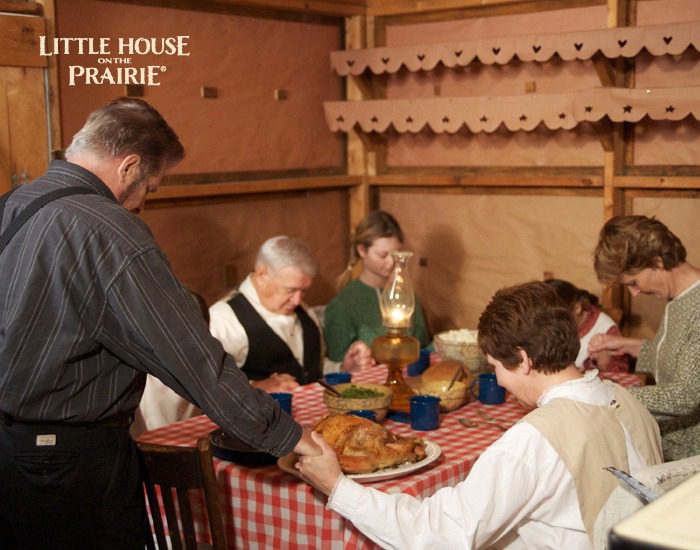
Thanksgiving Origins
So where did those images come from that fill our heads with Pilgrims and turkeys, hats and shoes with buckles, and going over the river and through the woods? Most people think of Thanksgiving as a holiday completely modeled on the famous first Thanksgiving in Plymouth, Massachusetts back in 1621. But Thanksgiving, as we celebrate it now, has a lot more to do with Laura Ingalls Wilder and other pioneers of the Victorian era than those early colonial thanksgiving celebrations (which they spelled with a small t).
Most of our Thanksgiving traditions were developed in the 19th century and even something like having a football game on the big day dates back to 1876. At its base, Thanksgiving is a combination of two traditions that do come from the Pilgrims, dressed up with Victorian trappings. One was a harvest celebration that involved a large meal. The other was the practice of thanksgivings that were specialized, proclaimed, one-time days of prayer and fasting.
During the early 19th century, the two traditions combined and the focus moved away from religion and self-denial to one more centered on family and a big meal. This tradition slowly spread throughout the country one state at a time with no fixed, national date. The legend began to grow that this exact meal right down to the turkey came directly from the Pilgrims. In 1822, the one eye-witness account of the 1621 meal between the Pilgrims and the Native Americans was rediscovered and in 1841 Alexander Young declared that this 1621 meal was the origin of the Victorian Thanksgiving holiday.
By the mid-1850s The New York Times had declared that Thanksgiving was a national holiday (even though it didn’t yet have a nationally-agreed-to date) and the Times urged Americans to keep the “institution as our Puritan grandmothers left it” specifying turkey and pumpkin pie. One of the reasons this connection was important was because it focused the story of America’s beginnings on the pious, hard-working Pilgrims away from the Virginian, gold-seeking adventurers who technically arrived first. It was also supported by the colonial revival of the late 19th century which made Pilgrim images popular.
Victorian Additions from Three Women
In 1837, Sarah Josepha Hale became the editor of Godey’s Ladies Book (the same magazine that Caroline Ingalls would later consult to make sure she kept in the latest style). That same year Hale began her campaign to make Thanksgiving a national, official holiday. She rallied support in her magazine and began a letter-writing campaign to politicians. After years of lobbying, she eventually succeeded when Abraham Lincoln declared the first official national Thanksgiving in 1863 (it would still depend on being declared by the President every year until 1941).
Another major contributor to Thanksgiving was Lydia Maria Childs. Childs wrote the poem commonly known as Over the River and Through the Woods. Originally published in a book of children’s poems called Flowers for Children, it has been part of Thanksgiving since 1844. The poem and the story song it became were originally much longer. However, this was one of many folk songs that were shortened due to the limitations of early records, and only three verses remain in the popular version of the song.
Another reinforcement of Pilgrim Thanksgiving history was a series of novels, most notably Standish of Standish by Jane Austin. A descendant of the original Pilgrim colonists, Austin took the facts of the colony and embellished them with romance and improbable adventures. Austin’s depiction of that 1621 event became popular culture’s version of how Thanksgiving started upon its publication in 1889.
In the end, it wasn’t just women cooking in the kitchen who make the Thanksgiving we celebrate today possible, but it was also Victorian women, like Laura Ingalls Wilder, who created the holiday as we now know it.
Sarah S. Uthoff is the main force behind Trundlebed Tales striving to bring the History, Mystery, Magic and Imagination of Laura Ingalls Wilder and other greats of children’s literature and history to life for a new generation. Uthoff is a nationally-known Laura Ingalls Wilder authority and has presented at five of the Wilder homesites, many conferences and numerous libraries, museums, and events around the Midwest.
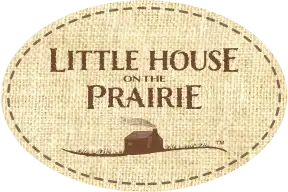

As an Australian, we are not too familiar with the meaning behind Thanksgiving Day. I wish we had introduced the idea of being thankful for what we have though instead of dragging in Halloween and it’s witches etc. We have Australia Day on 26 th January which celebrates the arrival of white men in the First Fleet and is now causing a lot of controversy as it was nothing to celebrate for our indigenous people who feel that their land and lifestyle were then taken from them while they were massacred in many cases.
Happy Thanksgiving Little House lovers! I’m sooooooooooooooooooooooo thankful for this website and lately have been watching season 5. So fun, just like all the other seasons!
I remember Thanksgiving in my childhood with many family members gathered around my Grandmother’s table. It was a time for story telling, a turkey with stuffing calling for onion & sage, cranberries, quick breads, pumpkin, mincemeat and apple pie. cousins, grandparents and great aunts & uncles. Today my grandparents, my parents and the aunts and uncles have passed. The younger generation went to college and live in the suburbs now days and have jobs in high rise buildings in big cities. We are miles apart and
our gatherings are nothing like the houseful of folks that came to my Gramma’s House. I miss that large gathering and generations of family. We were farmers, neighbors and friends… some were characters that “cleaned up” pretty good to come to Thanksgiving at Gramma’s house. They played cards after dinner, stopped to do chores (milk cows) and came back to Gramma’s for turkey leftovers and more card playing. We were close and enjoyed each other’s company. I have three children with families in Idaho, North Carolina & Pennsylvania. I am very fortunate and blessed to have one of my children who is close that comes for all holidays.
Was just doing my annual reading of The Long Winter. The Boasts gave the Ingalls butter, but I wondered why they did without butternwhen they had a cow they were milking,
Easily resolved…
Sage AND onion!!
Youre welcome!!
????????
-mmb
This warms me to the heart and certainly gets me into the spirit of Thanksgiving.
I find how folk stories evolve over decades and centuries one of the most interesting things. There was an old story that Squanto brought popcorn to the first Thanksgiving feast in the 1600’s, but of course that is just a story. However, popcorn _did_ exist in that part of North America at that time. According to history.com, French explorers in the 1600s did write of Iroquois who popped their corn in clay containers and hot sand. Saying that, I would imagine that if popcorn _had_ made an appearance at the first Thanksgiving, it would have been written about, as it would have been a remarkable and unforgettable food moment to European settlers.
I. Love. The. Little. House. Books. . I. Always. Felt. That. I. Should. Had. Been. Born. In. 1850. Instead. Of. 1950.
I am having trouble finding these stories in the books. Could you provide the page or chapters? I’ve looked all through Silver a lake and Farmer Boy, but I cannot find the stuffing or popcorn stories. I would also like to know where the three kernels story is located. Thank you!
Love her book. I have them in my collection. Would love to get the first set.written by her mother.
My family has a tradition that we have been doing for years. Before we start our Thanksgiving dinner we have three, either dried navy beans or unpopped popcorn kernels, on our plate. We go around the table and each person holds one (bean or kernel) at a time and tells what they are thankful for. Sometimes it can take a very long time, depending on how many people there are, and it can be surprisingly emotional when you are truly grateful. It really causes us to focus on all the blessings we truly have.
Thanks, Sarah, for retelling all my favorite Thanksgiving stories from the Little House books and delving into the early American history as well. Each year I also prepare pumpkin pie and parched corn from the recipes in Barbara Walker’s thorough “Little House Cookbook.” Happy Thanksgiving!
I enjoyed this walk down memory lane and all the wonderful insight. Thank you!
I thought I would also mention the sage vs. onion stuffing fight takes place in spring when Pa spots the first flock of the season.
Great essay! Informative without being overbearing, and I love the facts about women’s contributions to today’s celebrations.
I loved the little note about the argument between Laura and Mary what to put in the dressing for the Goose. They could have compromised by making a small batch of each or do what I do. Make it with both. I have always made mine with Sage (actually poultry seasoning) and Onions.
We have sage and onion together,xx
A very interesting read. Thanks for sharing.
Very interesting. Loved reading. Learned things I didnt know. Are Laura’s still in the library’s today?